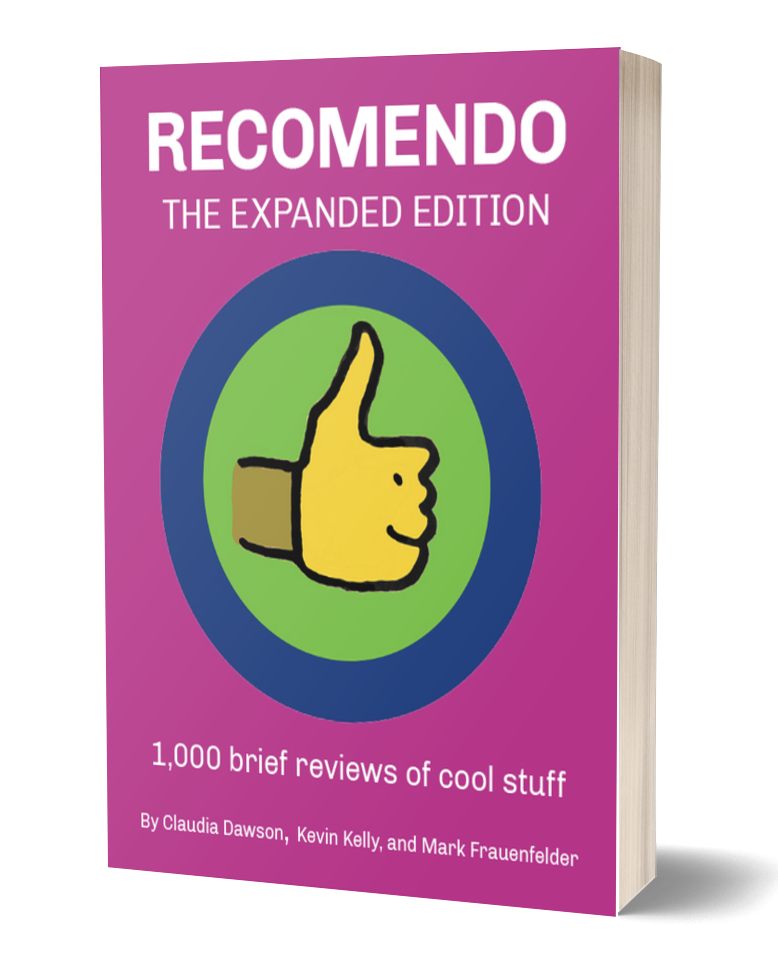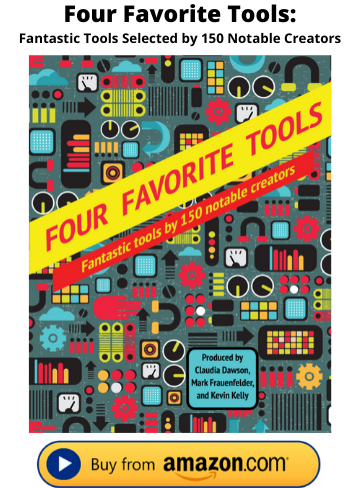Only What’s Necessary / The White Donkey
Issue No. 92
ONLY WHAT’S NECESSARY – A WHOLE LOT OF PEANUTS AND SCHULZ STUFFED INTO ONE VOLUME BY CHIP KIDD
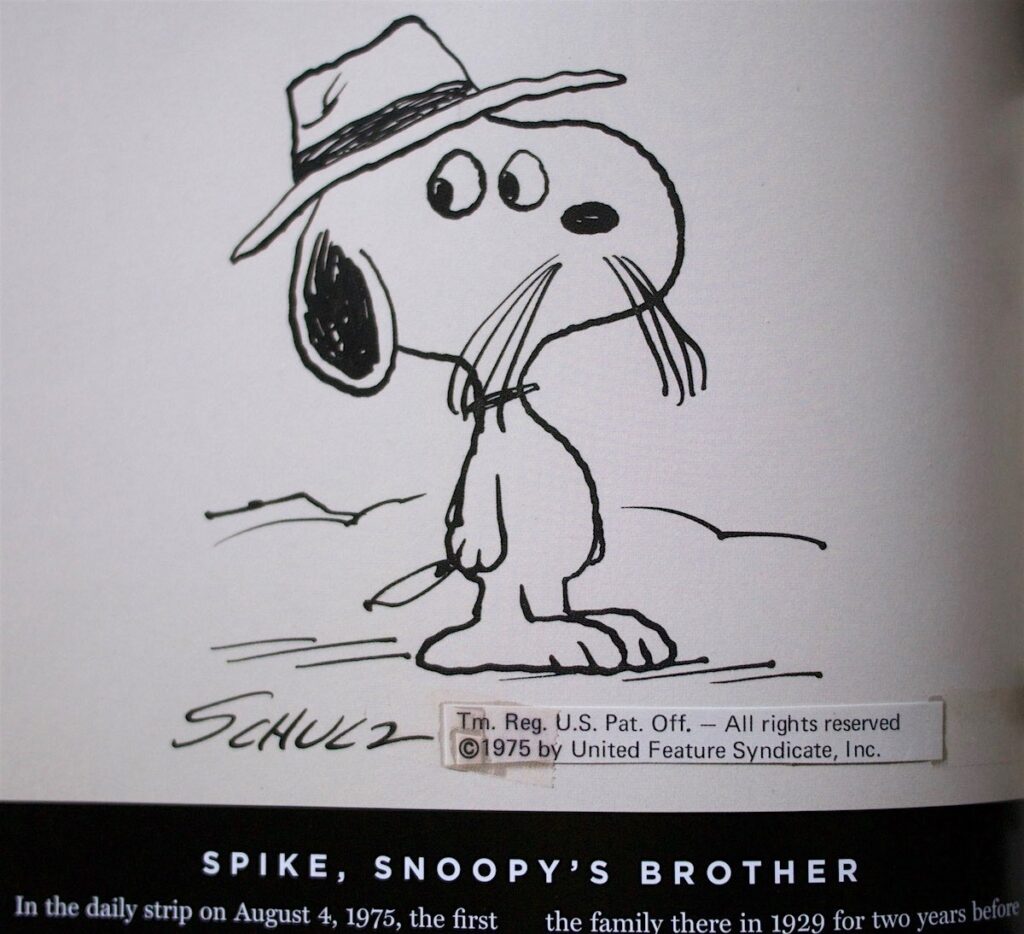
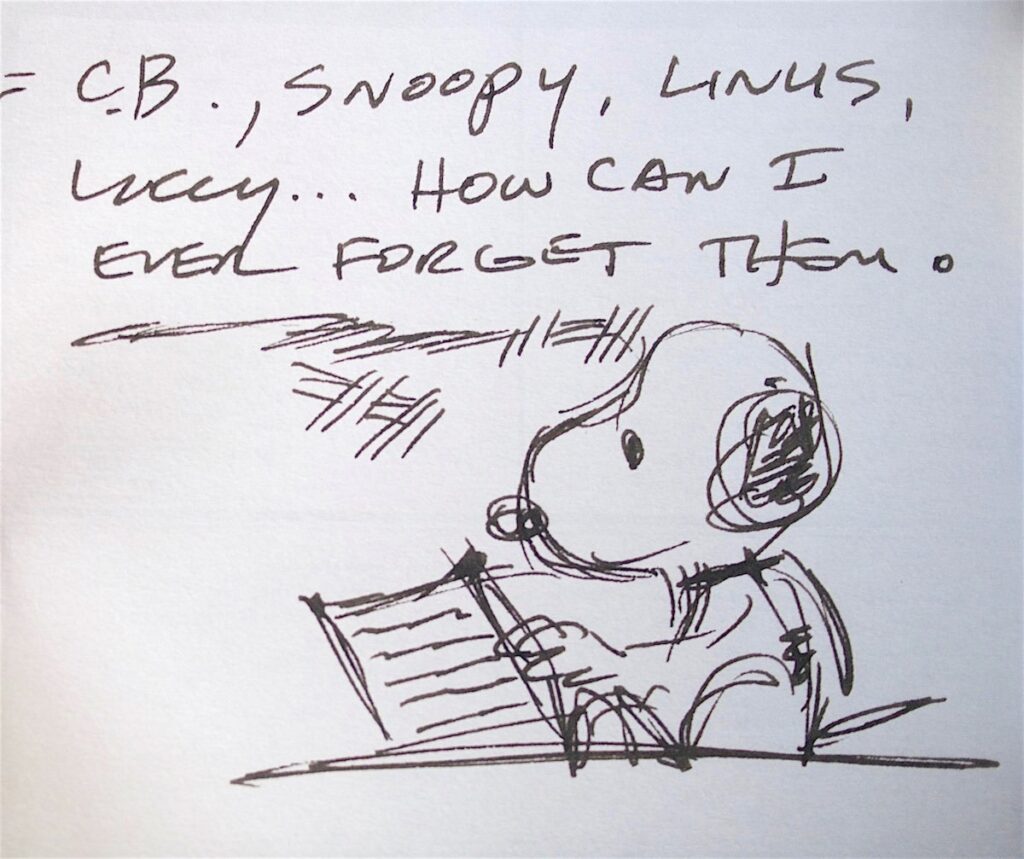

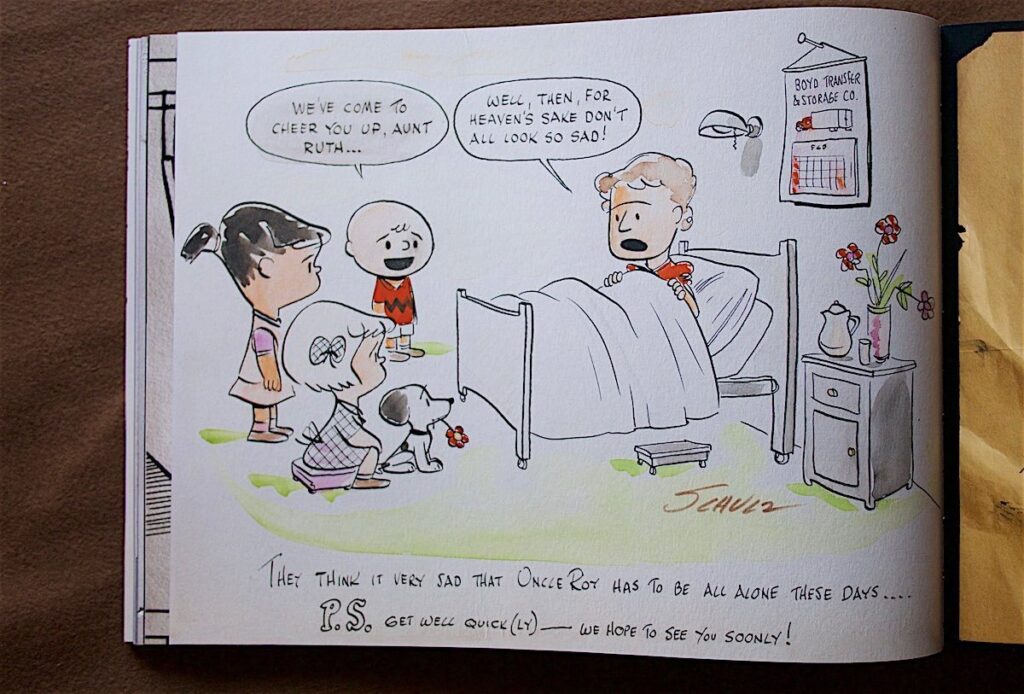
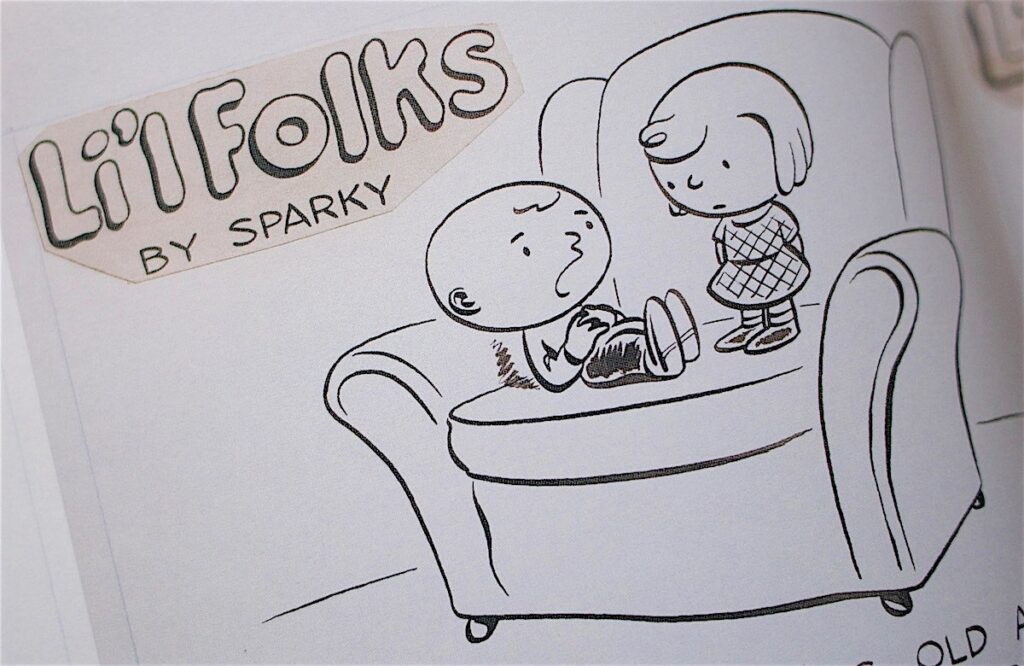
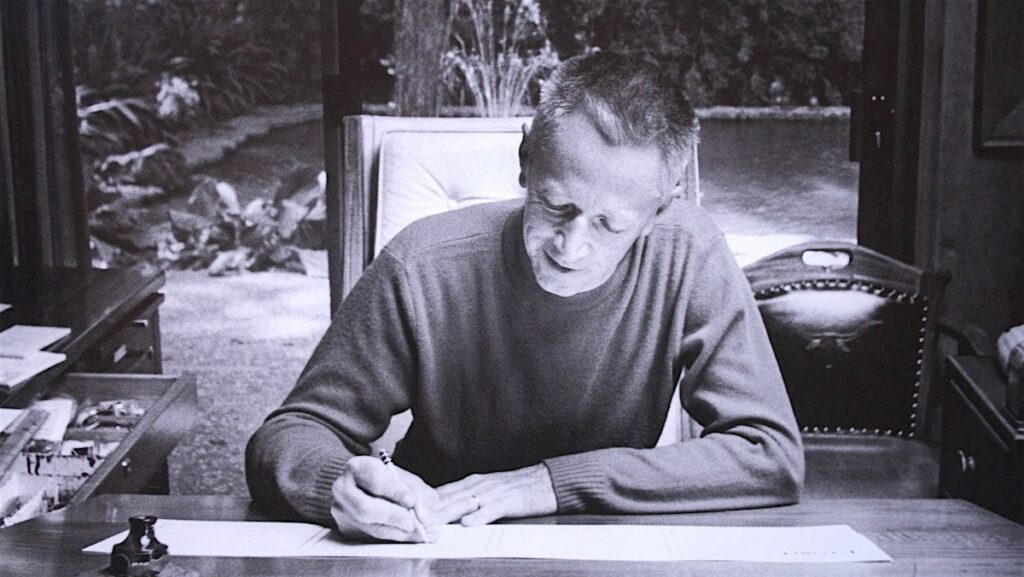
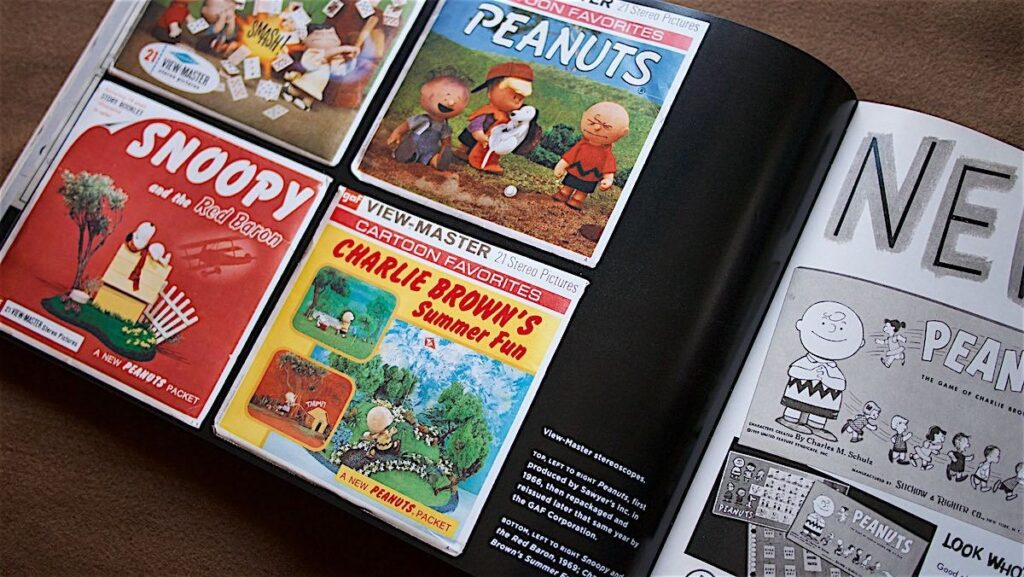
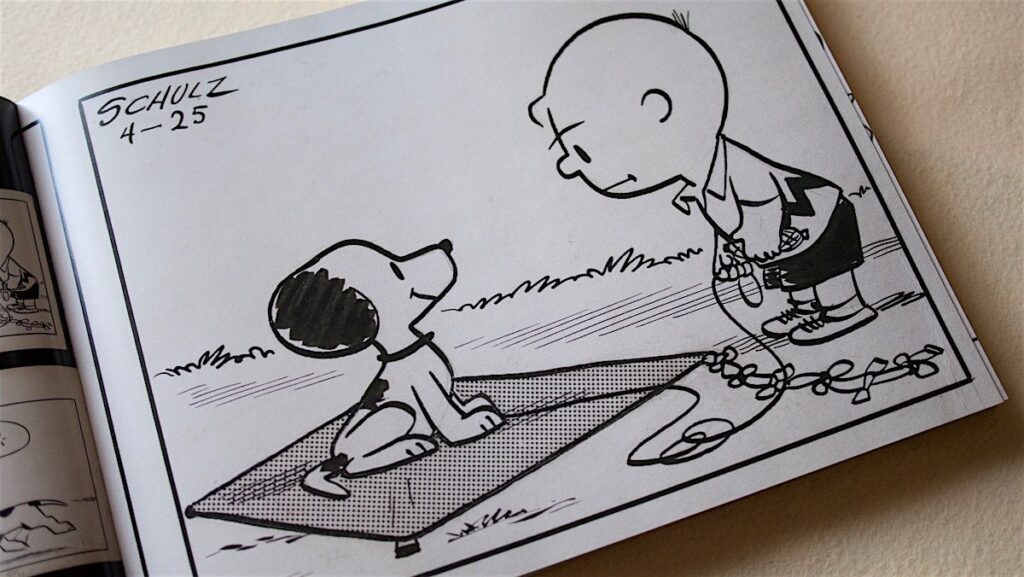
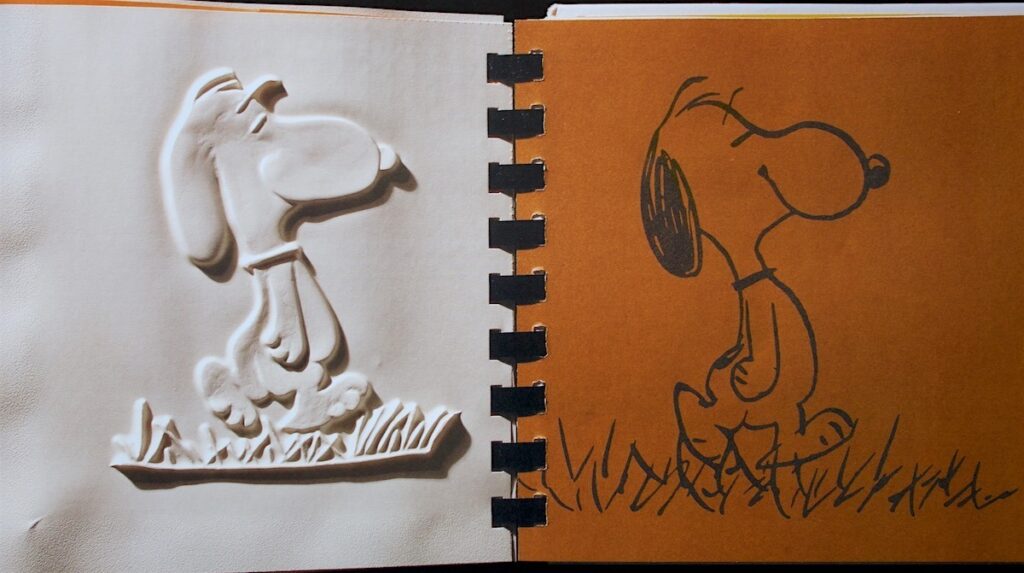
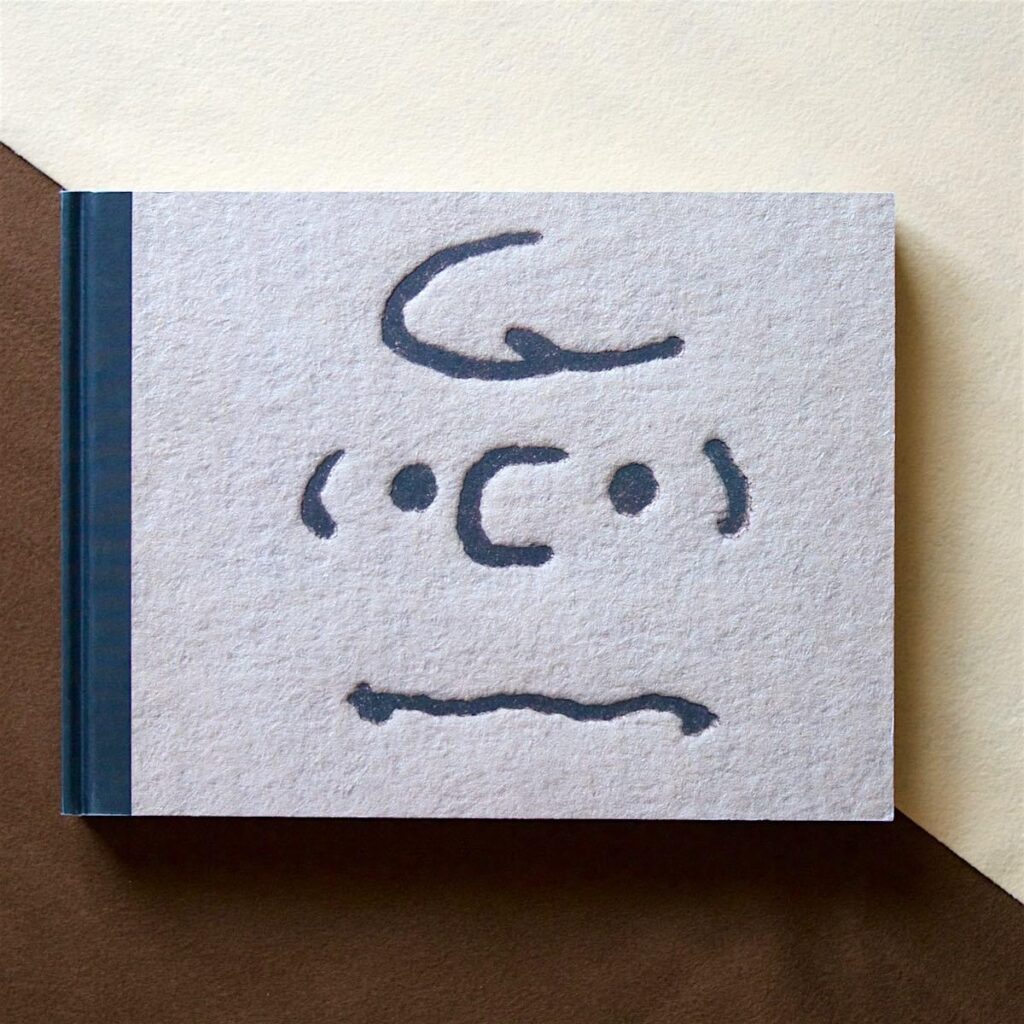
Only What’s Necessary: Charles M. Schulz and the Art of Peanuts
by Chip Kidd (author) and Geoff Spear (photographer)
Harry N. Abrams
2015, 304 pages, 12 x 9 x 1 inches
Here’s a quick list of everything to be found in Chip Kidd’s Only What’s Necessary: Charles M. Schulz and Peanuts:
Intro by Jeff Kinney
Foreword by Jean Schulz
“Behind the Door” by Karen Johnson (Director of the Schulz Museum in California)
Preface by Chip Kidd
Brief biography of Sparky Schulz, including pictures of his first published drawing in Ripley’s Believe it or Not
Photos & drawings of and from Schulz’s WWII Sketchbook
Early cartoons Schulz drew for the Saturday Evening Post
Schulz’s first printed comic strips (1947)
Li’l Folks strips
Peanuts strips
Process of drawing Peanuts
Rare, unfinished strips
Subscriber promotions for newspaper editors
Ads for Peanuts coloring books, viewmaster collections, color by numbers kits, candy bars, etc.
Pictures of the Peanuts board game
Vinyl dolls
Covers from the first collections
Advertisements featuring Peanuts characters
Braille editions
Correspondence with Harriet Glickman resulting in the creation of Franklin
Unpublished watercolors & other art
Intros and backstories for other characters (Spike, Woodstock)
“The Last Strip” by Paige Braddock (Creative Director at the Schulz Studio in California)
There is, in other words, a whole lot of stuff packed into this one single volume of ephemera. And it’s a heck of a package. Heavy, glossy pages bring out the differences in color between hand-drawn strips and their pasted-on title cards as well as the fine printing notes scribbled in the margins. Likewise, the color printing serves to show that these are photographs of the original strips and artwork rather than digital reproductions or post-processed scans.
The attention to detail and care that has gone into curating this book is obvious, considerable, and welcome. Special effort is made to not only display the various pieces of ephemera but to provide context for them. It’s easy to get lost in little stories and minutia detailing phenomena from a time gone by; I’ve been through the book several times now, each time going down one rabbit hole or another, becoming fascinated by some aspect or another of the Peanuts story that began (and sometimes ended) well before I was born.
Said aspects are fascinating (the production process), interesting (the board games and braille books), weird (the vinyl dolls), and, of course, just a little heartbreaking (the final strip), and served well by the top notch production values and curation. But I’m biased.
The title comes from Schulz himself, who referred to his cartooning style as keeping only what’s necessary. The designers of the book have equated this to simple, which is beautiful and eye-catching. But necessary can also mean everything: every line needed to show the characters’ feelings and reactions, every word needed to express the artist’s vision, every single thing needed to show why we still need Charlie Brown, Snoopy, Linus, and Lucy now, and for many years to come. – Joel Neff
THE WHITE DONKEY – FROM THE ONLINE COMIC SERIES ABOUT THE EXISTENTIAL CRISIS OF A MILITARY EXPERIENCE
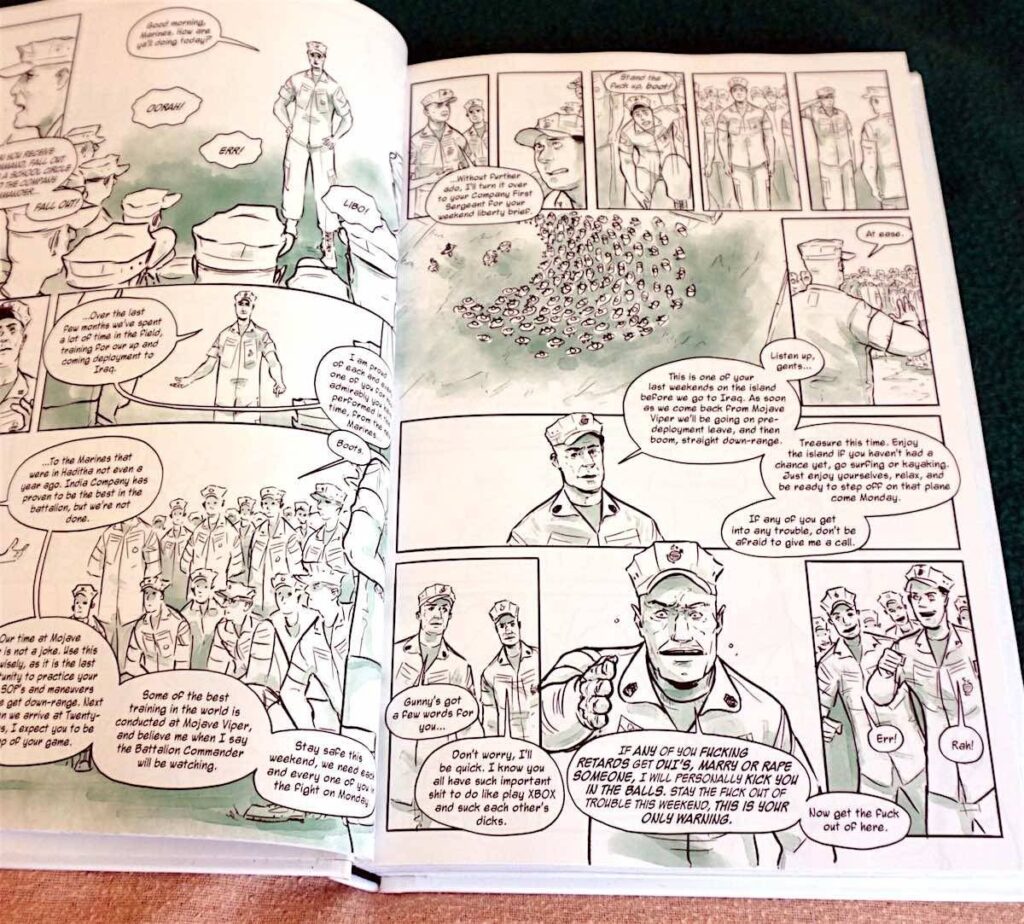
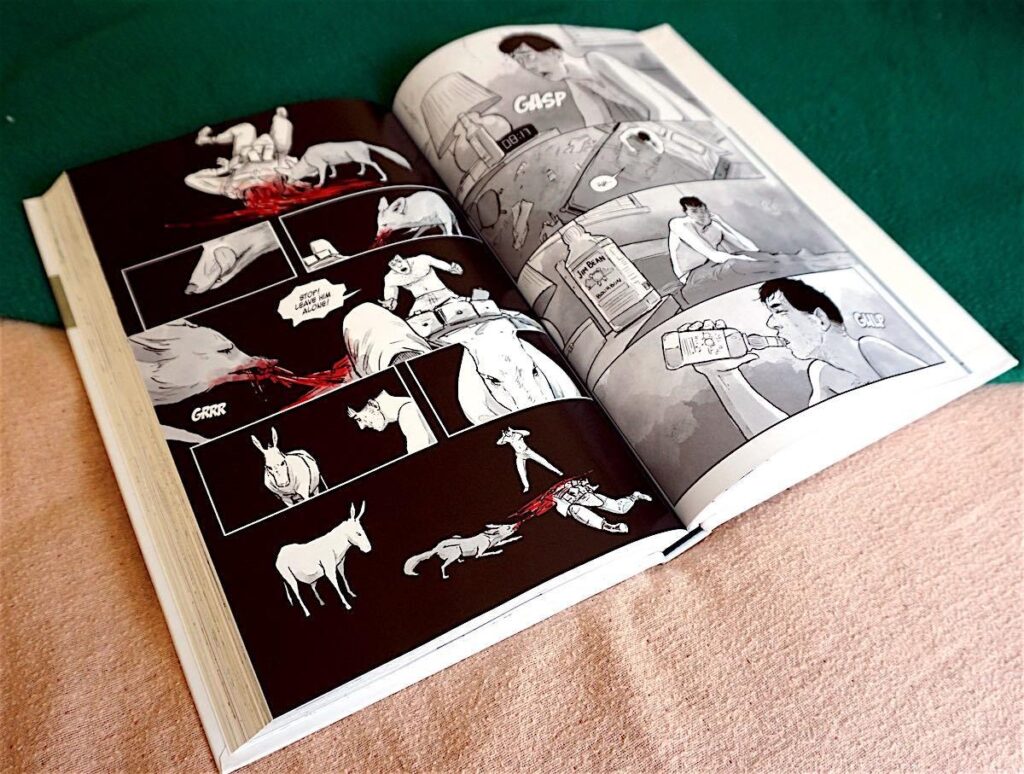
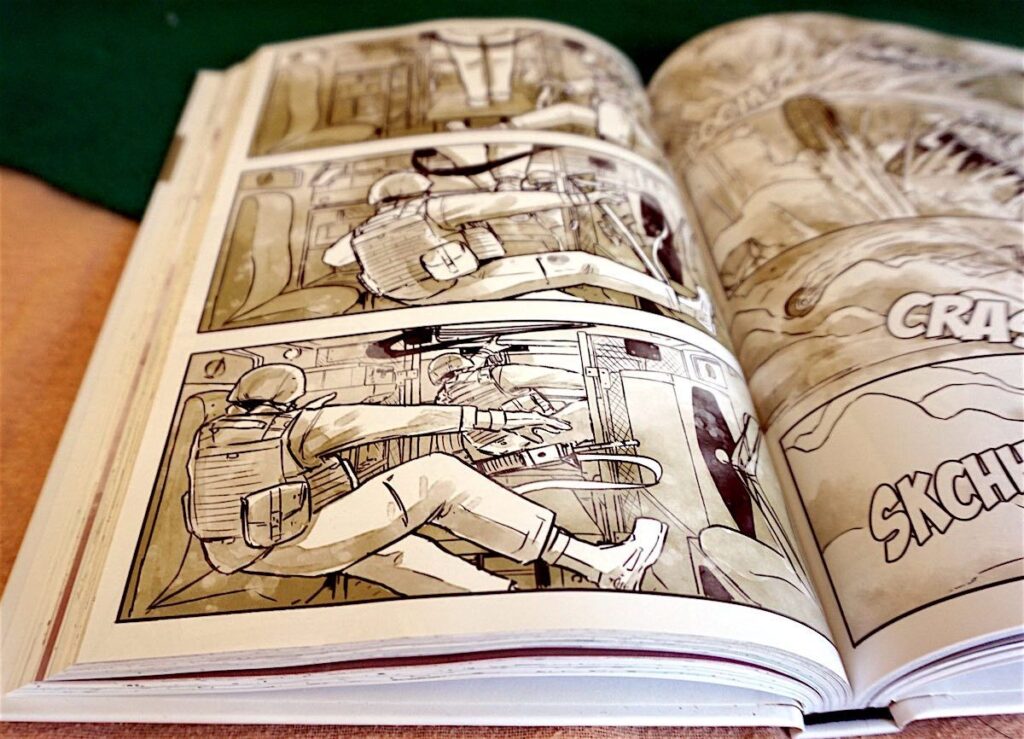
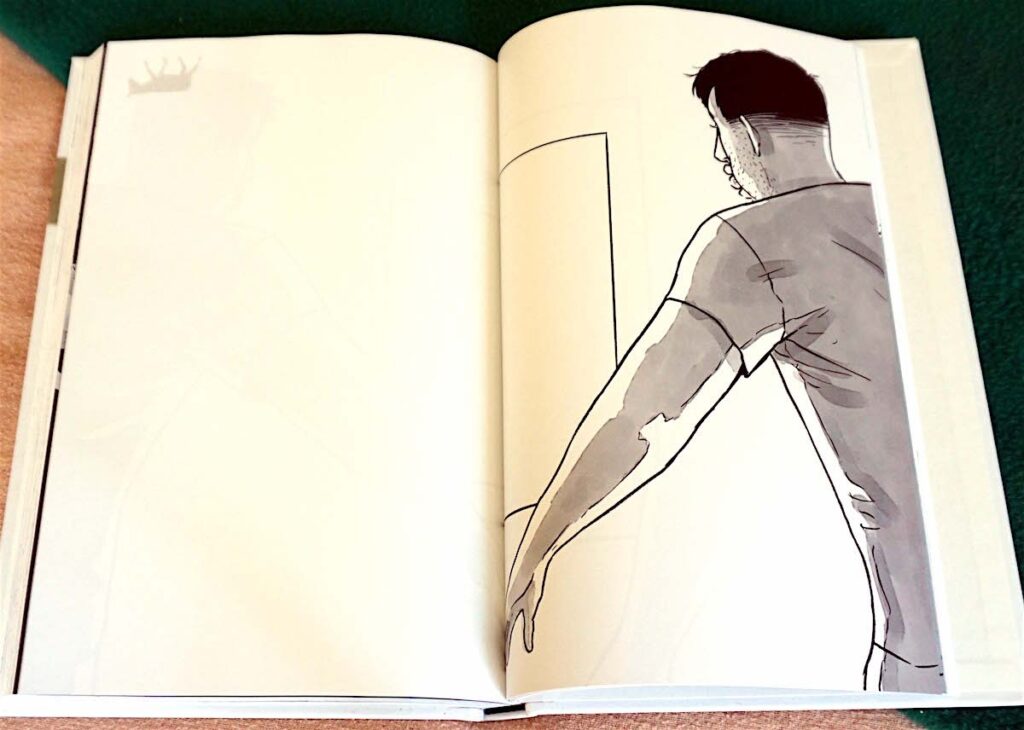
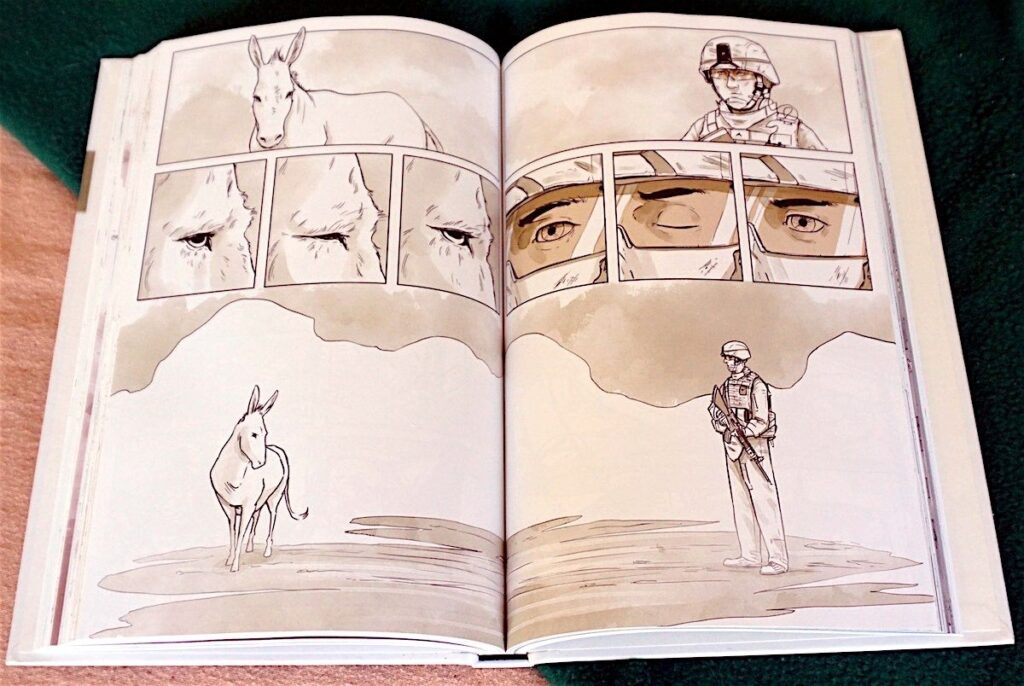
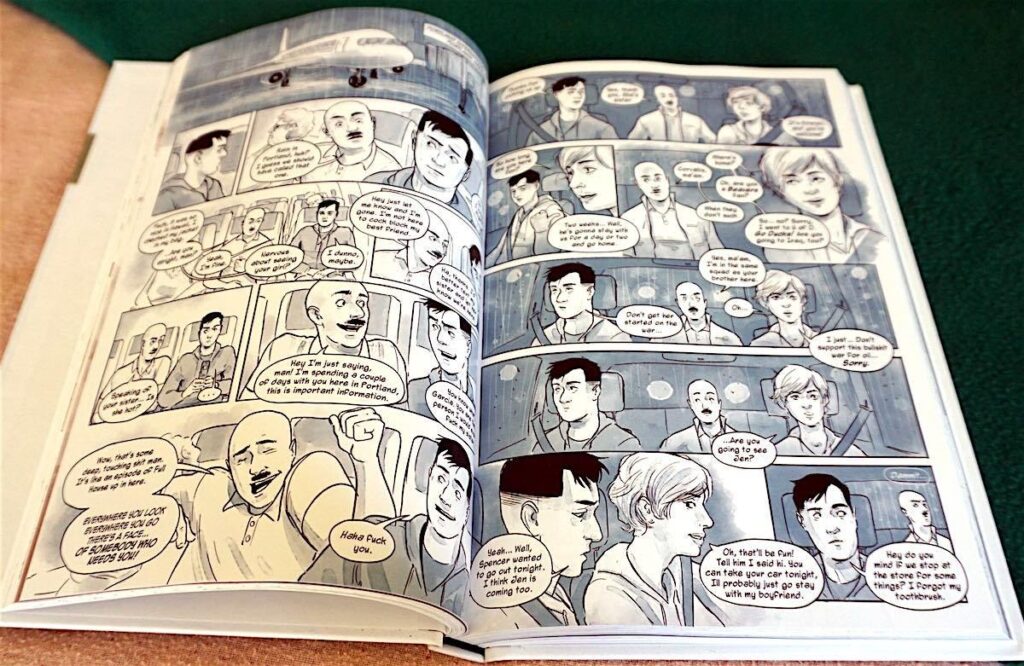
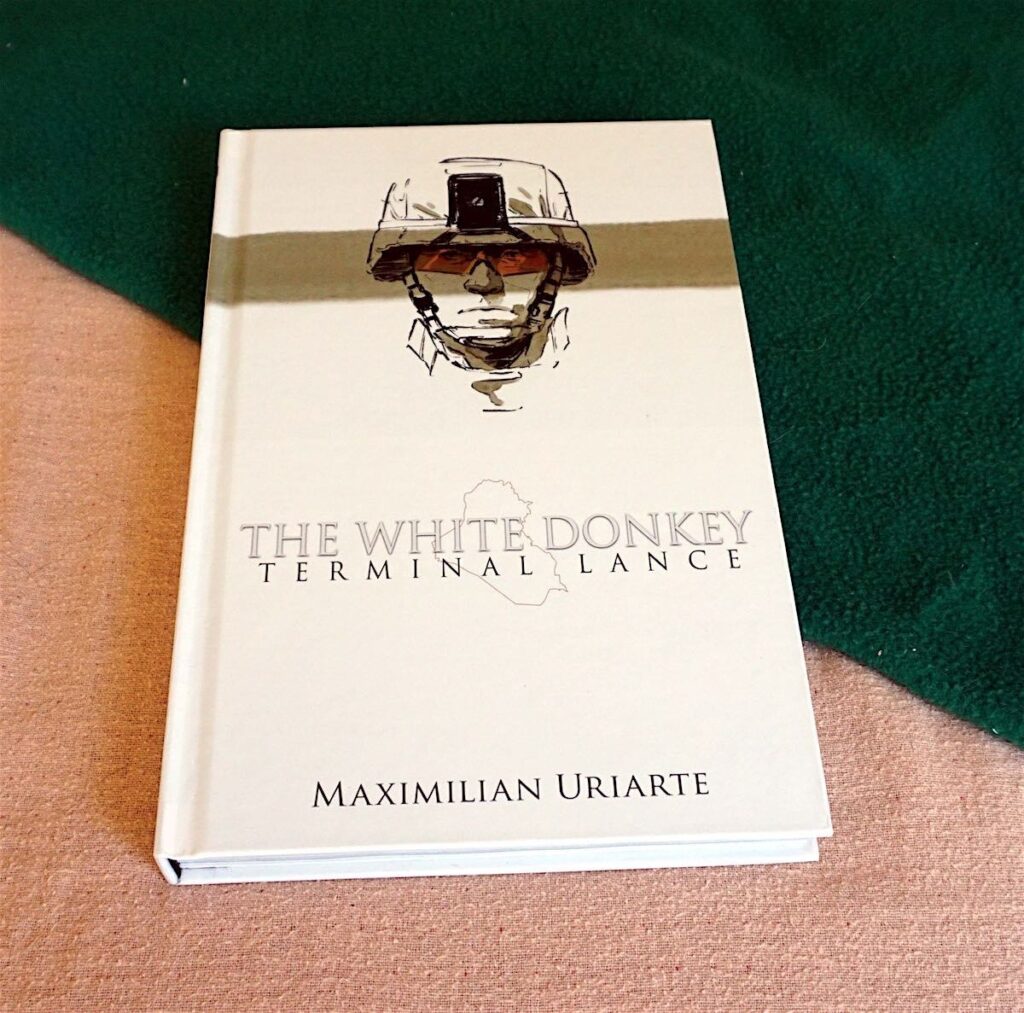
The White Donkey: Terminal Lance
by Maximlian Uriarte
Little, Brown and Company
2016, 288 pages, 7 x 10.5 x 1 inches
Maximillian Uriarte served four years in the Marine Corps infantry and went on two combat deployments to Iraq. While on active duty, he created an online comic strip, Terminal Lance, which grew from a small following to being published in official armed forces publications. In The White Donkey, which he calls his “thesis project,” he tells a story about the existential crisis of the military experience and what it means to enlist during a time of war. Subjects like hazing and PTSD are covered in the course of the story as he explores what might drive a Marine to suicide.
We follow Abe, a young, white middle-class kid who enlists after high school for want of a direction, trying to find something better to do with his life. He makes a friend in another “grunt,” Garcia, who’s there because there are no better paths for him. The contrast is stark. Garcia: “I didn’t have shit else going for me, you know? I was with the wrong crowd a lot, I’d probably be in prison by now if not here.”
Abe’s privilege is shown by his encounter with an Iraqi policeman who tells him: “I have met many of your type over the last few years, coming here to fulfill some personal conquest, but you never stop to think about how arrogant you are. You seek some enlightenment at the expense of my people.” The story follows Abe through training, his experience of the tedium of war, his need for validation and legitimacy in the eyes of fellow Marines, and finally, the horror of combat and the alienation of the returning veteran into his previous society. There are encounters with the locals, mistakes made, and the surreal encounter with the White Donkey, which holds up an entire column of armored vehicles as it plods slowly along in the middle of the road.
The art employed in The White Donkey is minimalist, stylized and realistic. Uriarte makes excellent use of color and story-board style to convey dramatic scenes. He makes use of color washes to separate different episodes of the stories. The pages of boot camp and training in Hawaii is a verdant green, Abe’s trips back to the civilian life is rendered in shades of blue-gray and the scenes in Iraq are in shades of brown and olive. White space is deliberate and used to great effect.
The language is punctuated with frequent profanity and the story is spiked with humor that is at times bitter and obscene. In other words, situation normal for a story set in today’s armed forces. This book hits you right in the gut. If you’ve ever wondered what it’s like to serve in the Marine Corps and the experience of deployment in a war-torn country like Iraq, this book will help you understand. – Carolyn Koh
11/11/25


